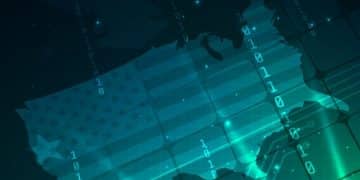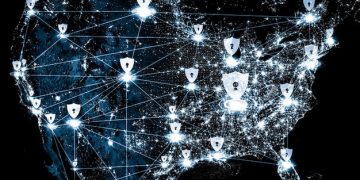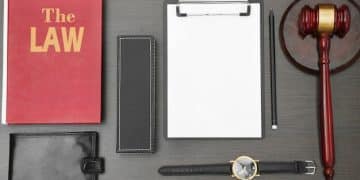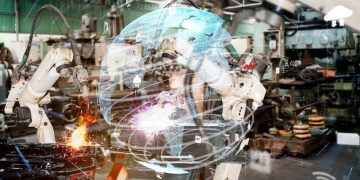Political Figures’ Security in 2025: Addressing Rising Threats

Political figures’ personal security in 2025 requires enhanced measures due to rising threats, including advanced technology, cybersecurity risks, and evolving geopolitical instability, necessitating proactive strategies and robust protective protocols.
In an increasingly volatile world, the security of political figures’ personal security is paramount. As we approach 2025, it’s crucial to examine the evolving threats and the measures being implemented to protect those who serve in the political arena.
Understanding the Evolving Threat Landscape
The nature of threats against political figures is constantly evolving, driven by technological advancements and shifting geopolitical dynamics. Understanding these changes is the first step in developing effective security strategies.
In 2025, several factors contribute to the increased risk faced by political figures. These include:
Technological Advancements
Sophisticated surveillance technologies, readily available on the open market, can be used to track and monitor individuals. Furthermore, the proliferation of drones and other unmanned aerial vehicles poses a significant threat, as they can be equipped with cameras or even weapons.
Cybersecurity Risks
Cyberattacks are becoming increasingly common and sophisticated. Political figures are particularly vulnerable to these attacks, which can be used to steal sensitive information, disrupt communications, or even manipulate elections. Protecting digital assets and communications is a critical aspect of personal security.
Geopolitical Instability
The global political landscape is becoming increasingly complex and unstable. Conflicts, terrorism, and extremism all pose a threat to political figures, particularly those who are involved in sensitive or controversial issues. Geopolitical tensions can quickly escalate, leading to increased risks for politicians both at home and abroad.
To address these evolving threats, security measures must be proactive and adaptable. Relying on outdated strategies and technologies is no longer sufficient to ensure the safety of political figures.

In conclusion, the threat landscape is dynamic and requires constant monitoring and adaptation. Understanding the nature of these threats is crucial for developing effective security strategies that can protect political figures in 2025 and beyond.
Enhanced Physical Protection Measures
Physical protection remains a cornerstone of political figures’ security. These measures are designed to prevent physical attacks and provide a safe environment for political figures to carry out their duties.
Specific components of enhanced physical protection include:
Advanced Surveillance and Monitoring Systems
These systems utilize cameras, sensors, and other technologies to detect and prevent threats. They can also be used to monitor the movements of political figures and track potential attackers. Surveillance systems are particularly important in public spaces and at events where large crowds are expected.
Reinforced Security Details
Trained security personnel provide close protection for political figures. These details are responsible for assessing threats, managing crowds, and responding to attacks. They must be highly trained and equipped to handle a wide range of scenarios, from minor disturbances to serious assaults. Advanced training techniques and simulations can prepare security details for unexpected challenges.
Secure Transportation
Armored vehicles and secure transportation routes are essential for protecting political figures while they are on the move. These measures can help to prevent car bombings, ambushes, and other types of attacks. Secure transportation also includes careful route planning and close coordination with local law enforcement.
- Bulletproof Vehicles: Providing secure transport.
- Bodyguards: Trained professionals for close protection.
- Secure Locations: Safe residences and offices.
Effective physical protection requires a layered approach, combining multiple security measures to create a robust defense. This approach minimizes vulnerabilities and ensures that political figures are well-protected in all situations.
In conclusion, while technology and cybersecurity play significant roles, physical protection remains an indispensable aspect of ensuring the safety of political figures. By enhancing surveillance, securing transportation, and improving security details, it is possible to create a safer environment for political leaders to perform their duties.
The Role of Technology in Modern Security
Technology plays an increasingly important role in modern security measures for political figures. Advanced technologies can enhance threat detection, improve communication, and provide real-time situational awareness.
Technology enhances security through several key areas:
Artificial Intelligence (AI) and Predictive Analytics
AI-powered systems can analyze vast amounts of data to identify potential threats and predict future attacks. These systems can monitor social media, news reports, and other sources of information to detect anomalies and patterns that may indicate an impending threat. Predictive analytics can also be used to assess the risk level of different events and locations, allowing security personnel to allocate resources accordingly.
Biometric Identification Systems
Biometric technologies, such as facial recognition and fingerprint scanning, can be used to control access to secure areas and verify the identity of individuals. These systems can help to prevent unauthorized access and detect imposters. Biometric identification can also be used to track the movements of political figures and identify potential threats in real-time.
Secure Communication Channels
Encrypted communication channels are essential for protecting sensitive information and preventing eavesdropping. These channels can be used to communicate with security personnel, government officials, and other stakeholders. Secure communication also includes training political figures and their staff on how to protect their devices and accounts from cyberattacks.
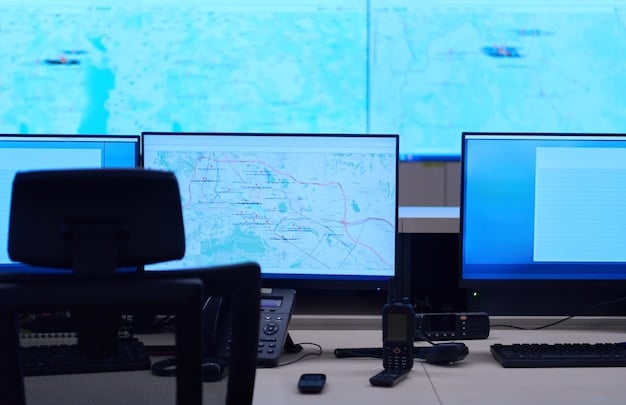
These technologies can also be integrated with existing security measures to create a more comprehensive and effective security system.
- AI Threat Detection: Analyzing data for potential risks.
- Biometric Security: Controlling access with identity verification.
- Encrypted Communication: Securing sensitive information.
In conclusion, technology is transforming the landscape of personal security for political figures. With continued advancements in AI, biometrics, and secure communication, it is possible to create a security infrastructure that can effectively mitigate risks and protect political figures from harm.
Cybersecurity Measures for Political Figures
In today’s digital age, cybersecurity is a critical component of personal security for political figures. Cyberattacks can compromise sensitive information, disrupt communications, and even manipulate elections. Implementing robust cybersecurity measures is essential to protect political figures from these threats.
Cybersecurity measures are implemented through:
Multi-Factor Authentication (MFA)
MFA requires users to provide multiple forms of identification before gaining access to an account or system. This can include a password, a code sent to a mobile device, or a biometric scan. MFA makes it much more difficult for attackers to gain unauthorized access, even if they have obtained a user’s password. MFA should be implemented for all critical accounts and systems used by political figures and their staff.
Regular Security Audits and Vulnerability Assessments
These audits can identify potential weaknesses in security systems and provide recommendations for improvement. Vulnerability assessments involve scanning systems for known vulnerabilities and testing the effectiveness of security controls. Regular audits and assessments are essential for maintaining a strong security posture and staying ahead of potential threats.
Training and Awareness Programs
Political figures and their staff must be trained on how to recognize and avoid phishing attacks, malware infections, and other cyber threats. These programs should cover topics such as password security, email hygiene, and secure browsing practices. Regular training and awareness can help to reduce the risk of human error, which is a major factor in many cyberattacks.
A strong cybersecurity posture not only protects political figures but also helps to maintain public trust and confidence in the integrity of the political process.
In conclusion, cybersecurity is an essential aspect of personal security for political figures. By implementing multi-factor authentication, conducting regular security audits, and providing training and awareness programs, it is possible to significantly reduce the risk of cyberattacks and protect sensitive information.
The Importance of International Cooperation
Addressing threats to political figures often requires international cooperation. Terrorist groups, cybercriminals, and other malicious actors operate across borders, making it difficult for any single country to effectively combat these threats. International cooperation can facilitate the sharing of information, the coordination of security efforts, and the development of common security standards.
Effective international cooperation can be useful in the following ways:
Information Sharing
Sharing intelligence and threat assessments is crucial for identifying and preventing attacks. This can involve sharing information about known terrorists, cybercriminals, and other individuals who pose a threat to political figures. Information sharing should be conducted in a secure and timely manner to ensure that it is effective.
Joint Training Exercises
These exercises can help to improve coordination and communication between different security agencies. They can also provide an opportunity to test security protocols and identify areas for improvement. Joint training exercises should be conducted regularly to ensure that security personnel are well-prepared to respond to threats.
Harmonized Security Standards
Developing common security standards can help to ensure that political figures are protected consistently across different countries. This can involve establishing standards for physical security, cybersecurity, and intelligence gathering. Harmonized standards can also facilitate the sharing of best practices and the development of innovative security solutions.
Additionally, international cooperation can help to address the root causes of political violence and extremism. By working together to promote peace, stability, and economic development, countries can reduce the likelihood of political violence and create a safer world for political figures and citizens alike.
In conclusion, international cooperation is essential for addressing the evolving threats to political figures. By sharing information, conducting joint training exercises, and harmonizing security standards, countries can work together to create a more secure environment for political leaders around the world.
Community Engagement and Public Awareness
Community engagement and public awareness play a crucial role in enhancing the security of political figures. By fostering a culture of vigilance and encouraging the public to report suspicious activity, it is possible to prevent attacks and protect political leaders.
Community engagement and public awareness can be expanded through these initiatives:
Public Awareness Campaigns
These campaigns can educate the public about the importance of security and encourage people to report suspicious activity. These campaigns can use a variety of channels, including social media, television, and print media. Public awareness campaigns should be targeted at specific audiences, such as community leaders, business owners, and students.
Community Watch Programs
These programs involve training community members on how to recognize and report suspicious activity. Community watch programs can help to create a network of eyes and ears that can detect potential threats. These programs should be coordinated with local law enforcement agencies to ensure that they are effective.
Open Communication and Transparency
Political figures should engage with the public and be transparent about their security measures. This can help to build trust and reduce suspicion. Open communication can also help to identify potential threats and address concerns about security. However, transparency must be balanced with the need to protect sensitive information.
By working together, political figures, law enforcement agencies, and the public can create a safer community for everyone.
- Awareness Campaigns: Teach public about security importance.
- Watch Programs: Train community to report suspicious activity.
- Open Communication: Maintain transparency about security.
In conclusion, engaging the community and raising public awareness is essential for enhancing the security of political figures. By fostering a culture of vigilance and encouraging the public to report suspicious activity, it is possible to prevent attacks and protect political leaders.
Future Trends in Political Figure Security
Looking ahead to 2025 and beyond, several trends are likely to shape the future of political figure security. These trends include the increasing use of technology, the growing threat of cyberattacks, and the need for greater international cooperation.
Here are trends that could take place:
Advanced Surveillance Technologies
These technologies will become more sophisticated and pervasive. They will be used to monitor public spaces, track individuals, and detect potential threats. However, the use of these technologies will also raise concerns about privacy and civil liberties. It’s imperative to strike a balance between security and privacy when implementing new surveillance technologies.
More Sophisticated Cyberattacks
Cyberattacks will become more targeted and difficult to detect. Attackers will use sophisticated techniques, such as artificial intelligence and machine learning, to bypass security controls and gain access to sensitive information. Political figures and their staff must be prepared to defend against these attacks.
Greater Emphasis on Prevention and Early Detection
Security measures will focus on preventing attacks before they occur. This will involve using predictive analytics, intelligence gathering, and other techniques to identify potential threats. Early detection will also be critical for minimizing the impact of attacks.
Embracing these trends will require a proactive and adaptive approach to security.
In conclusion, the future of political figure security will be shaped by technology, cybersecurity, and the need for international cooperation. By anticipating these trends and adapting security measures accordingly, it is possible to protect political leaders from harm and ensure the continuity of government.
| Key Aspect | Brief Description |
|---|---|
| 🛡️ Physical Security | Reinforced security details, secure transportation. |
| 🌐 Cybersecurity | Multi-factor authentication and regular security audits. |
| 🤝 International Cooperation | Sharing information to coordinate global security efforts. |
| 📢 Public Awareness | Engaging & educating communities to prevent attacks. |
FAQ Section
▼
The main cybersecurity threats include phishing attacks, malware infections, and unauthorized access to sensitive information and systems, emphasizing the need for strong digital defenses.
▼
International cooperation is vital for efficient intelligence sharing, harmonized security standards, and coordinated security efforts, especially when dealing with global threats.
▼
Despite technological advances, physical security is crucial to prevent physical attacks, manage crowds, and ensure comprehensive protection beyond digital measures.
▼
Engaging with the community enhances security by fostering vigilance and increasing public awareness, thus encouraging reporting on suspicious activities.
▼
AI will enhance predictive analytics, enable more sophisticated surveillance, and improve threat detection, but raises questions about privacy and civil liberties.
Conclusion
In conclusion, ensuring the security of political figures in 2025 requires a multifaceted approach that integrates advanced technology, robust physical protection measures, international cooperation, and community engagement. By understanding the evolving threat landscape and implementing proactive strategies, it is possible to protect those who serve in the political arena and safeguard the democratic process.
